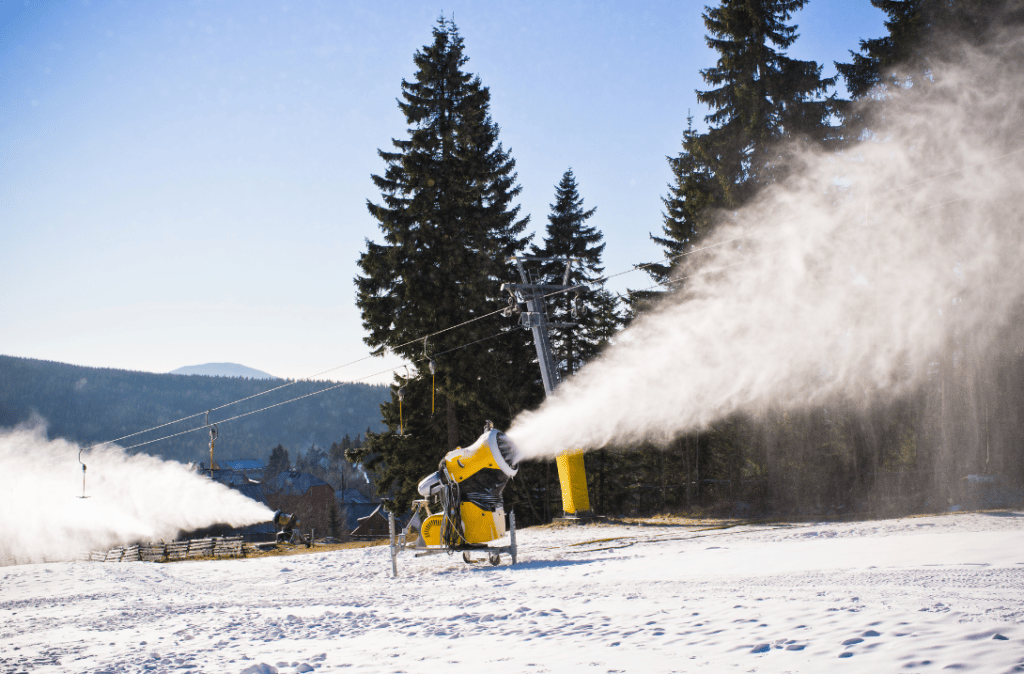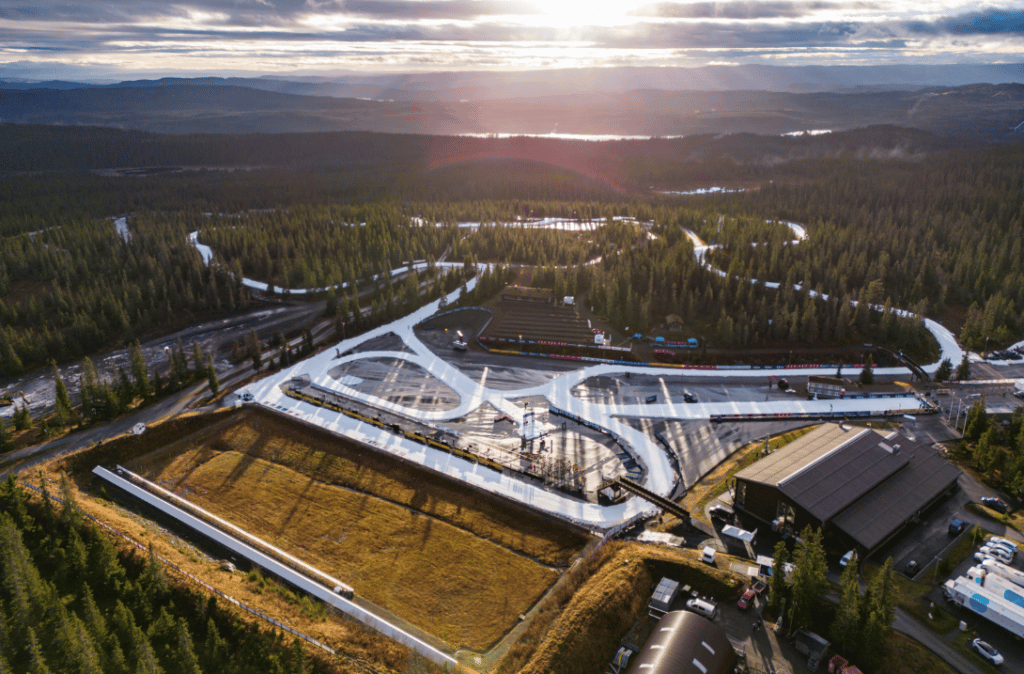Back in the days when a proud two television channels dominated the daily routine in households in Germany, whenever it got colder outside, there was a program on ARD, produced by Bayerischer Rundfunk, with the beautiful title "Before a new skiing winter." Skiing expert Heinz Magerlein, curiously enough a native of Leipzig, explained to the enraptured audience in front of the screens what to expect in the coming months, on trails, slopes and pistes. Maegerlein presented deep snow-covered ski slopes, and what is now considered a trend sport was already possible back then: daring male and female skiers whizzed their boards over snow-covered roofs of homely mountain huts used as ramps, or daringly plunged down steep slopes in deep snow.
At some point the show was discontinued, no longer up to date, too few viewers. But if Maegerlein were to present the new ski winter today, he would have to face completely different topics, because the beautiful pictures of yesteryear are still possible, but only part of the truth. And probably the broadcast would now have to read "Where is there still a new ski winter?"
Because the problems surrounding skiing are manifold. First and foremost, there is climate change. The Alpine ski circus has already been affected, opening races on the Gardena/Gröden glacier and the second downhill in Zermatt went pretty wrong. The adventurous dream of the world federation FIS to move the season forward failed because of the external conditions. The FIS giants have to ask themselves whether they would not have preferred to use the tests at the last training camp in snow-sure Chile as a start to the new winter. But as is generally known, commerce takes precedence over common sense, and so the Alpine season got off to a disastrous start.
Things don't look much better in other parts of the country: In Kuusamo, Finland, they waited until shortly before the start of the season for the longed-for snow, which brought beads of sweat to the foreheads of the Finnish officials in the Arctic Circle. In Lillehammer, still one of the places of longing for the Nordic athletes, they struggled to secure a properly prepared cross-country skiing track; in the meantime, fortunately, it also snowed at Lake Mjösa. The ski jumpers started in Wisla, Poland, right away with a competition on an ice track and landed on mats as in the summer competitions. A taboo break, who would have presented the idea to the world federation only a few years ago, would have been laughed at in the best case. Other organizers - especially in Central Europe - are considering whether snow depots, transport from ice halls or alternative solutions could secure the competitions. But this already brings up the next problem - the energy crisis.

Yes - the know-how to produce the white splendor has long been available. Snow cannons are not witchcraft, but they are power guzzlers. And with soaring energy costs, this leads to a vicious circle, not only in the high-performance sector, but also in junior and popular sports. Who can, who should still be able to afford snowmaking on alpine slopes at reasonable prices, without the inclined winter sports enthusiasts freezing into a block of ice when they read the prices for ski passes. Which small club can afford the costs for the use of the snow cannon(s) without running the risk of having to declare insolvency at the end of the winter. Which organizer is willing to take the economic risk and throw his hat in the ring to hold competitions. People like to look at the World Cup and report on the worries and hardships of the hosts. But World Cups are only the tip of the iceberg. The many events that form the underpinnings of the sport, be it in Alpine or FIS Cup, be it international or national in junior, have similar costs but much less chance of revenue.
What is true for the ski circus is of course also true for the biathlon sport. In Oberhof, a snow hall was built especially to secure the World Championships in February 2023. The costs are considerable, and the hosts - not only in Thuringia - are faced with the dilemma of having to explain to the population why, on the one hand, the heating in the hut at home is to be throttled back, and on the other hand, the cooling systems are running at full load. A contradiction that is unlikely to be resolved in the coming years.
Which brings us to the prospects. The World Cup in Qatar and the associated postponements in many other sports (the European Women's Handball Championship, for example, was moved forward by a full month) will (hopefully) remain a one-off exception. But it does show the permanent prevailing danger. If the "big players" cough, the rest of the sports world has pneumonia. Among the hopefully solvable tasks is also the internal dispute at the Ski World Federation FIS. It should be clear to the decision-makers at the headquarters in Oberhofen, Switzerland, that the time of internal battles must come to an end, otherwise there is a threat of more than just damage to the image, otherwise the core sport of the Winter Olympics will be permanently damaged.
This has already come about because the International Olympic Committee showed the traditional sport of Nordic combined the yellow card in the summer and does not want to include women in the Olympic program. Actually, the card color is even yellow-red, because the men were given a grace period until the 2026 Games, if nothing fundamental changes by then, the men will also be out of the Olympic program. And the signals that the world federation FIS, which currently prefers to circle around itself, sent out after the IOC decision are more devastating than forward-looking. Full steam ahead towards the abyss, that seems to be the motto.
There are many more homemade problems: The dispute over new ski brands, binding systems, helmets and suits is as old as professional ski jumping itself. The dispute over the ban on fluorine waxes, on the other hand, is not so easy to categorize. Of course it's about environmental protection, but it's also about influence, about sporting advantages or disadvantages. It is clear that environmental damage must be kept as low as possible. But it is also clear that the contamination caused by fluoride applied to skis is in the per mille range in the overall global damage caused by fluoride, and that the matter is and remains apparently uncontrollable even after several attempts. Apart from the insane cost-benefit ratio for the necessary equipment, which would have to be purchased separately. This may still be feasible in the World Cup, but at the latest in the popular races, the exercise reaches its limits. And who actually checks the recreational skiers?
While the fluorine issue may seem rather marginal, and the same is true, by the way, of the recurring discussions about ammunition in the biathlon, climate change itself will probably remain the most serious problem of the future.

The biathlon world federation IBU has been dealing for some time with the question of whether the sport on roller skis is also presentable in winter. If you believe the athletes, then probably not. The same applies to ski jumpers, so the motto is: exceptionally yes, but in principle rather under the usual winter conditions.
But where are they still to be found? Do traditional competition plans have to be rethought? Will travel plans possibly have to be changed completely? Should the first third of the winter be increasingly or even exclusively focused on Scandinavia, and the competition calendar in high winter then take place in Central Europe? Do competitions in low mountain ranges still work at all? Do the energy costs justify doing sports in the snow or do we have to do without? Will winter sports under summer conditions become year-round sports or will they be dropped altogether? And what effects - both positive and negative - will this have on mass sports, on young people, on tourism, on people's leisure time behavior, on their health, but also on the economy, on the producing sectors, hotel industry, gastronomy.
And so the beginning of a new ski winter of the 70s of the last century is just not comparable with what there is to experience in the 20s of the 21st century. No one can predict what it will look like in 10 or 20 years. But all those involved should and must work together to create the conditions that will make winter sports possible in the decades to come.
Fotos: K.Voigt Fotografie

